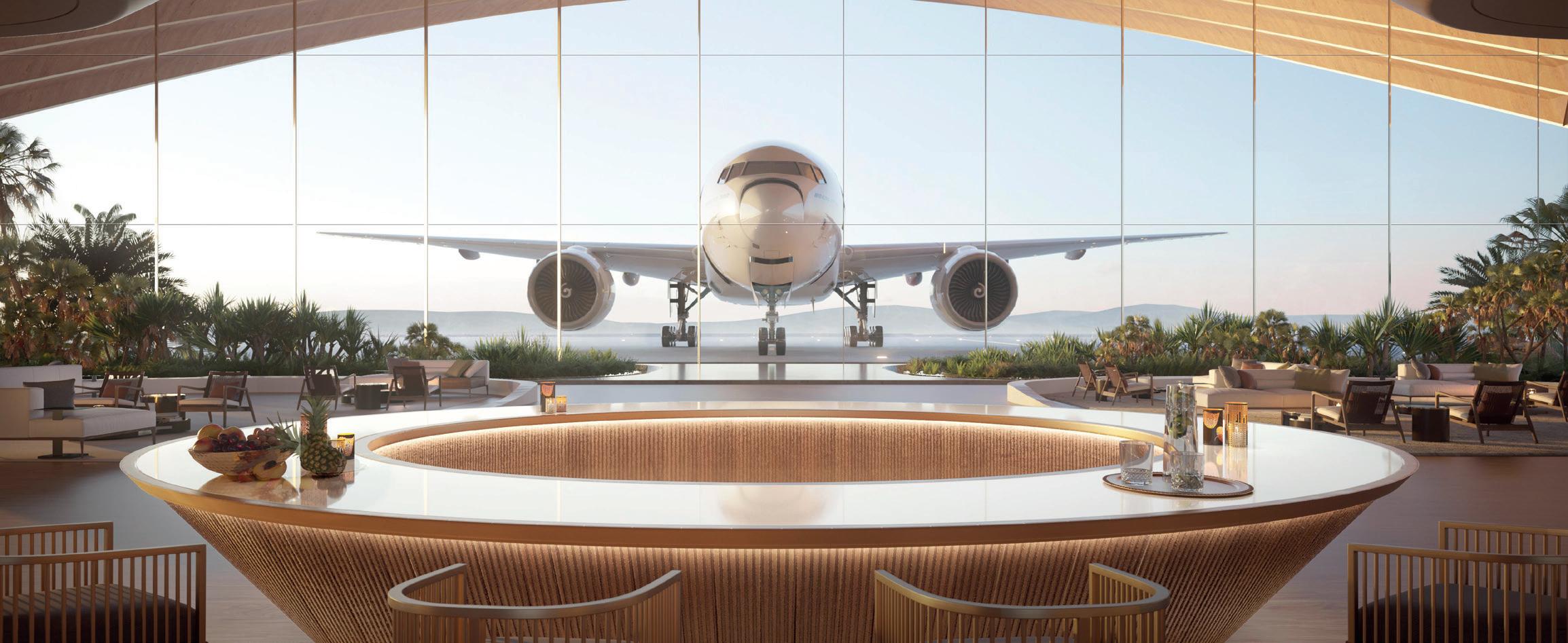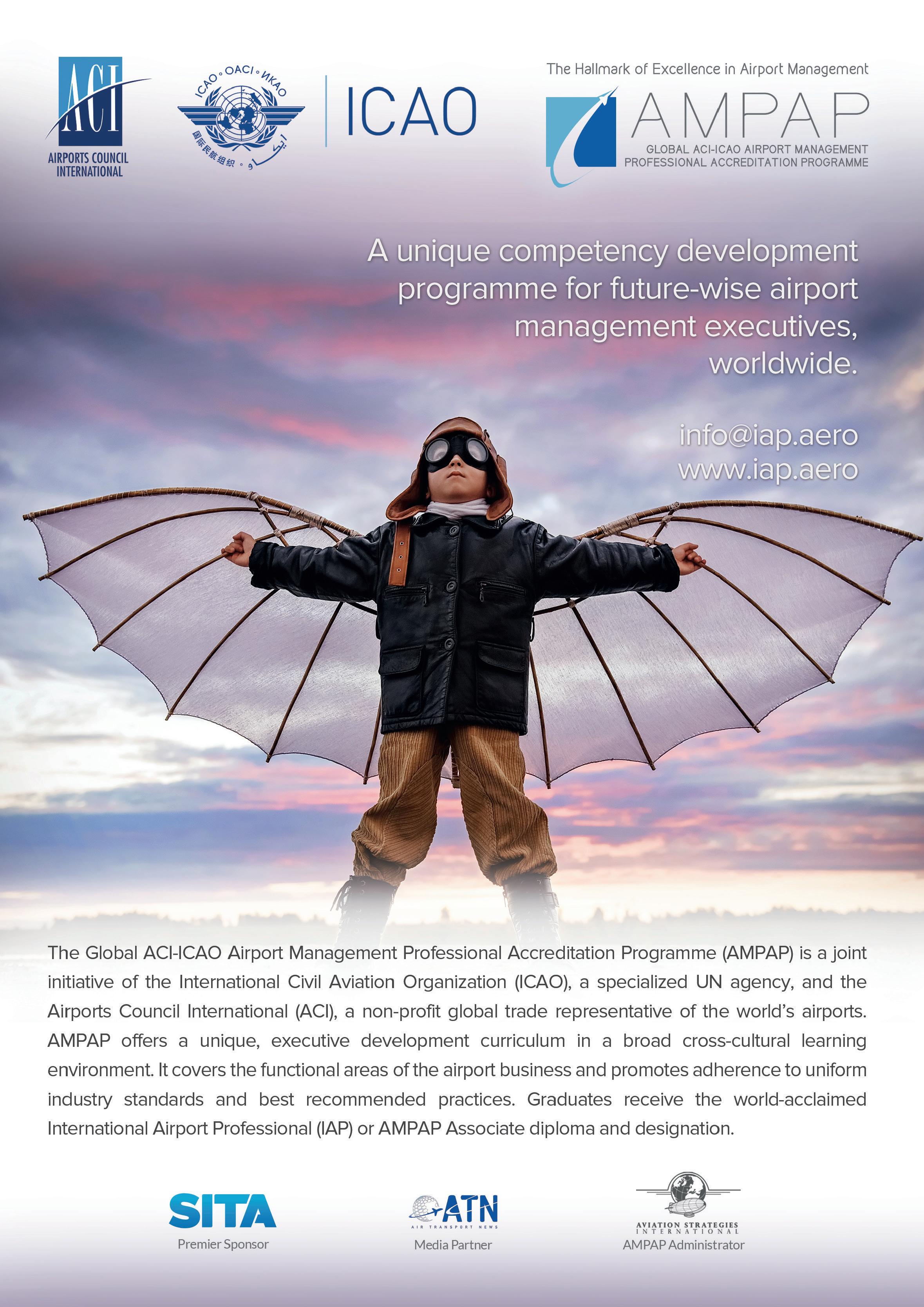
3 minute read
Volume
Works forging ahead The current construction phase is being led by Saudi Arabia’s Almabani General Contractors working alongside Nesma & Partners. At the time of writing, 35% of the asphalt runway works, around 50% of more than 16 kilkometres of storm water channels and 64% of the aeronautical ground lighting (AGL) secondary ducts required by the airport have been competed.
According to TRSDC, this means that 48% of the overall airport construction is complete. Excavation and installation of AGL ducts and the formation of the primary apron and circular taxiway around the yet-to-be-built terminal building are in progress.
Advertisement
In a September 21 interview with radio station Dubai Eye, Group CEO of TRSDC, John Pagano, said: “Red Sea will open its first resorts – probably three – at the end of next year and then a further 13 by the end of 2023. At least six hotel brand partners are set to be announced by the end of October.”
Like other Gulf airports, RSIA is at the crossroads of Europe, Asia and Africa with more than 250 million people living within three hours flying time. With 360 days of sunshine, averaging 32 degrees in summer, it is envisaged that the Red Sea Project will be a year-round destination for an elite group of travellers.
Pagano said he expects to see a customer split at the resort that is 50% international and 50% domestic/regional, brought in on a mix of scheduled and charter aircraft, as well as some private jets. “The main international source markets will be Western Europe, Russia, Asia, China and less so the US,” he noted.
Travellers will get their first vacation experience at the airport where Foster + Partners is well advanced with the terminal concept, designed “to bring back a sense of luxury into the arrival and departure experience”, according to senior partner, Toby Blunt.
Partner at the architecture firm, Matthew Hayhurst, states: “The brief was to create something that nobody’s ever seen before; that stands out and defines the Red Sea experience architecturally.”
Foster + Partners has come up with a semi-circular terminal divided into five canopied sections reminiscent of undulating sand dunes. Planes can park directly under each cantilevered canopy creating a ‘wow factor’ for viewers inside the terminal.
Hayhurst notes that smart technology will be used to create a luxury experience, part of which will extend to a one-minute arriving and departing process.
“Arrivals will go to a welcome centre to be escorted to their destination,” said Pagano. While Blunt noted that “departing passengers will almost feel like they are still at the resort until they get on that plane”.
For its part, daa International will soon be providing airfield and terminal operations, aviation services and facilities management as well as overseeing all commercial activities.
Nick Cole, CEO of daa International, said: “We’re working through the finer details but, in total, the new airport is likely to provide employment for several hundred staff.”
An exceptional passenger experience In line with the Foster + Partners vision, Cole expects the passenger experience to be very different from a typical airport.
“It will be an ultra-high-end product, driven by both the design of the terminal and by the way services are delivered to passengers,” he reveals. “Given that all guests will be staying at the destination, checked-in baggage can be dealt with seamlessly on arrival and departure. You won’t see passengers hauling large bags through the airport, whether arriving or departing.”
He continues: “Typically, airport designers create big-volume spaces. At Red Sea, Foster + Partners will create smaller, more intimate spaces within the terminal. It will feel more luxurious.”
Within the terminal, five separate departure suites are being designed as a series of pods, each one offering facilities such as spas and restaurants.
On the all-important sustainability front, daa International has outlined some of its plans. “We will be encouraging airline customers to use the newest, most energy-efficient aircraft and also be working with them in relation to the introduction of sustainable aviation fuels and electric-engineered aircraft,” says Cole.
All ground operations will be powered by 100% renewable energy from TRSDC’s campus, adds Cole, while single-use plastics will be banned.
As part of TRSDC’s larger regenerative tourism initiative, RSIA may well set new standards in airport sustainability practices, while also offering the most luxurious, customised service at any gateway in the world.
About the author
Curtis Grad is partner, president and CEO of strategic investment advisory and professional services company, Modalis Infrastructure Partners.


